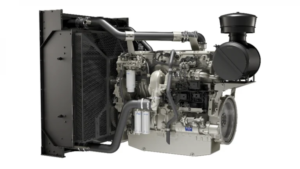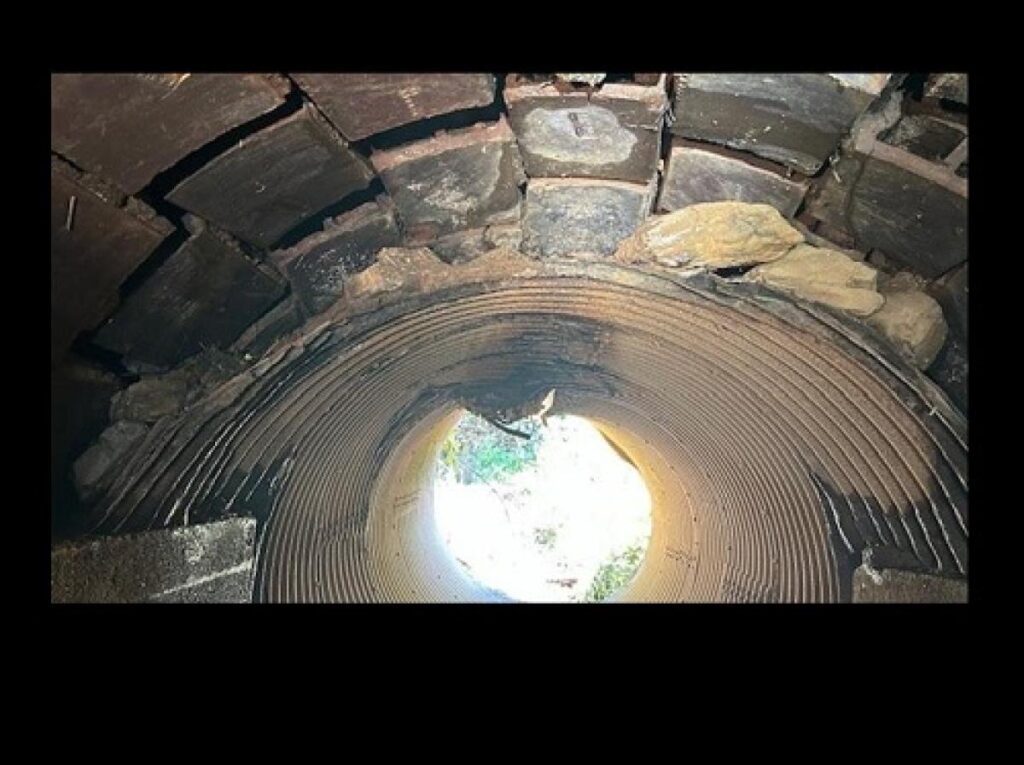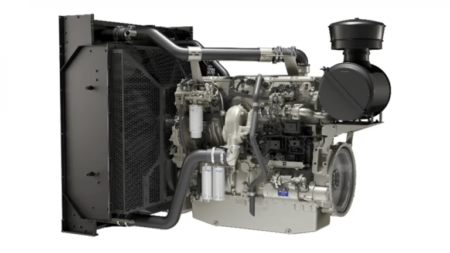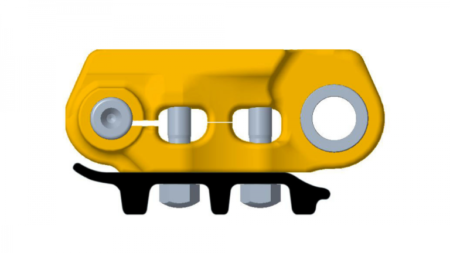Photo courtesy of NCDOT
A North Carolina Department of Transportation culvert inspection team made a historical discovery this summer regarding construction materials.
Crews inspecting a culvert scheduled for replacement under N.C. 200 in Cabarrus County, North Carolina, found it contained an unusual combination of materials: About a third each of cut granite, arched terra-cotta block — also called tile — as well as corrugated metal pipe; with the pipe, interestingly enough, the most deteriorated section of the culvert, despite it being the most modern of the culvert’s materials.
Robert Plyler, a NCDOT bridge maintenance engineer, knew this discovery — located within the Bost Mill Historic District, a property listed on the National Register of Historic Places — provided a special “window” into the construction practices of the past.
“The original structure is terra-cotta glazed tiles, which is a unique structure,” he said in a blog post. “This one also has a granite extension, so hand-split granite rocks were added in order to widen [N.C.] 200. We knew it was almost this wide in 1937.”
Plyler noted that “it is remarkable” that the culvert structure has lasted this long. Accordingly, the NCDOT’s Environmental Analysis Unit confirmed that the N.C. 200 culvert is indeed special — a rare example of a short-lived construction method based on hollow structural masonry block used by some North Carolina road builders during the early years of the 20th century.
The former Pomona Terra-Cotta Company near Greensboro — which existed from 1886 to 1975 — manufactured this block material and NCDOT archaeologists and architectural historians have been investigating Pomona block culverts since 2010, identifying only eight so far.
Since functional and safety concerns do not allow preservation of those structures, they prepare documentation, including extensive research and photography, ensuring that each resource is well represented in the state archaeological and architectural record.
The agency said “representative samples” of those tile blocks have been retained for comparative purposes and will be kept at the Office of State Archaeology’s Research Center in Raleigh.
Eventually, NCDOT construction teams removed the old culvert with great care by hand and a skillfully operated backhoe — a process that also resulted in what the agency called an “unprecedented bonus.”
“We’re going to recycle material that’s at least 100 years old into this modern structure so that adds more of a construction aspect, as opposed to a typical pipe replacement,” Plyler pointed out.
“There’s enough granite for us to build a 25-foot long and 10-foot-tall headwall to maintain some historical presence,” he said. “It’s a once-in-a-lifetime chance due to the size of this structure. In our careers, we’ll never another get a chance to do something like this.”
Read the full article here











